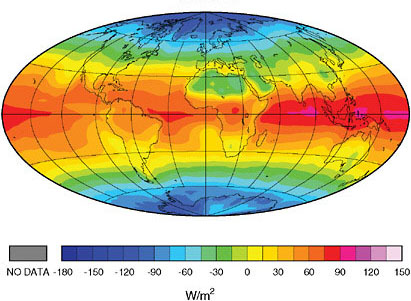
Radiation Poisoning? 'Scientists Fear Entire Ocean Affected'
Biological Hazard in MultiCountries (October)
The National Oceanic and Atmospheric Administration declared a recent rash of seal deaths to be an “unusual mortality event” on Tuesday. More than 60 seals have died and 75 found diseased in Alaska with skin sores and patchy hair loss. The Fish and Wildlife Service has also identified diseased and dead walruses. A similar official declaration for Pacific Walrus in Alaska is pending. The walruses have suffered from similar symptoms, which have also included labored breathing and appearing lethargic. Scientists have yet to identify a cause for this disease, but tests have indicated that it is not a virus.

Hunters, meanwhile, continue to see many healthy animals. Despite a significant contact with seals and walruses, no humans have reported similar symptoms. However, it is not known whether the disease can be transmitted to humans or other animals. In most cases, necropsies and lab tests have revealed skin lesions, fluid in the lungs, white spots on the liver, and abnormal growths in the brain. Some of the seals and walruses have undersized lymph nodes, possibly a sign of weakened immuned systems. In Canada and Russia, ringed seals have been reported suffering similar symptoms. It is unknown whether they are related.
Link 1 & Link 2 On Massive Animal Deaths (Hasen’t Been Updated In Awhile)
A mysterious and potentially widespread disease is thought to have contributed to the deaths of dozens of ringed seals along Alaska’s Arctic coast. Scores more are sickened, some so ill that skin lesions bleed when touched. The animals are an important subsistence food, and the National Oceanic and Atmospheric Administration has proposed listing them as threatened or endangered under the Endangered Species Act. In July, biologists with the North Slope Borough’s Department of Wildlife Management began receiving reports of ringed seals hauled out on beaches, an unusual behavior since the animals usually prefer the water or ice. Since then, they’ve found at least 100 seals with telltale mangy hair and skin lesions, mostly while traveling by four-wheeler along 30 miles of Beaufort and Chukchi sea coastline outside Barrow. At least 46 of those seals have been found dead, and experts aren’t sure if the disease is killing them or if other infections and polar bears are proving fatal once the seals become feeble. “Right now we’re leaning toward it being a virus, and that could weaken their immune system,” said Jason Herreman, a borough wildlife biologist studying seals and polar bears. The Department of Wildlife Management has never documented a similar outbreak in the North Slope region, Herreman said. Scientists don’t know the scope of the problem because since ringed seals are difficult to track and haven’t been counted for decades. Hundreds of thousands are thought to live in the region.
Reports of nearly 150 other seals with the illness have come in from villages outside Barrow, population 4,200, as well as from Chukotka, Russia, and Tuktoyuktak, a village on the northwestern corner of Canada, Herreman said. North Slope biologists are trying to determine the magnitude of the problem in the other countries, he said. Borough biologists have sent numerous tissue samples, from dead seals and others still alive, to laboratories around the country. Still, they have no answer. “When you’re dealing with a pathogen and you don’t know what it is, even whether it’s bacterial or virus, it takes a lot of work to narrow it down and isolate it,” Herreman said. “But I’m a little surprised they haven’t come up with something yet.” The Northwest Arctic Borough has also posted a notice on its website warning people to watch for sick seals in Northwest Alaska villages. Enoch Shiedt, natural resource coordinator for the Maniilaq Association in Kotzebue, said he’s received a few reports of sluggish seals hauled out on beaches this summer. But he hasn’t been able to confirm the sightings. One sighting occurred on the Kotzebue waterfront several weeks ago, but by the time he arrived, the seal had been rolled back into the water and was gone. He’s concerned the illness will spread up the food chain, affecting other animals and hunters near Kotzebue Sound.
“I’m scared they might pass it on one way or another and the whole ocean could be affected,” Shiedt said. Folks in the Barrow region also are worried. Many of the Slope’s Inupiat residents are about to begin hunting for seals, and some are wondering if they are safe to eat, Herreman said. The wildlife department has posted fliers around the borough — titled Natchiq On Our Beach. Natchiq means ringed seal in the Inupiaq language. The borough has also gone on the radio, asking villagers to report sightings of marine mammals that appear to be weak. The wildlife department is advising hunters to notify it of any sick seals they harvest and, if they choose to eat them, to cook the meat thoroughly. The animals don’t appear to be ailing from stress-related causes, something people might suspect because climate change has reduced the ice habitat that ringed seals normally prefer, Herreman said. Seals also don’t appear to be suffering from a lack of food. “They are all showing classic symptoms of disease,” he said.
The sickest ones don’t move much on the beaches and they have blisters or wounds that bleed easily, including around the nose, eyes and especially the rear flippers. Others have lost much of their hair. “They’re not deathly skinny. It’s not like they’re dying from malnutrition. But they’re not in great body condition,” he said. The reports haven’t let up. “I just went out this morning and I saw a seal that died last night,” Herreman said Wednesday afternoon. “It was frozen and the seagulls had gotten to it,” he said. Weakened seals are susceptible to predator attacks. Large numbers of polar bears have been gathering at Kaktovik, east of Barrow near the Arctic National Wildlife Refuge, and some have been eating hauled-out ringed seals there, he said. Some sick seals have survived weeks with the illness. Scientists also don’t know how pervasive the illness is, since even healthy ringed seals are difficult to track and census. Ringed seal numbers aren’t well documented. A study done in the 1980s estimated about 250,000 ringed seals hauled out on northern Alaska’s shore-fast ice during the spring. Many more are thought to live farther out in the pack ice. But those estimates are very rough, Herreman cautioned. The worldwide population has been estimated at 4-6 million, he said.

